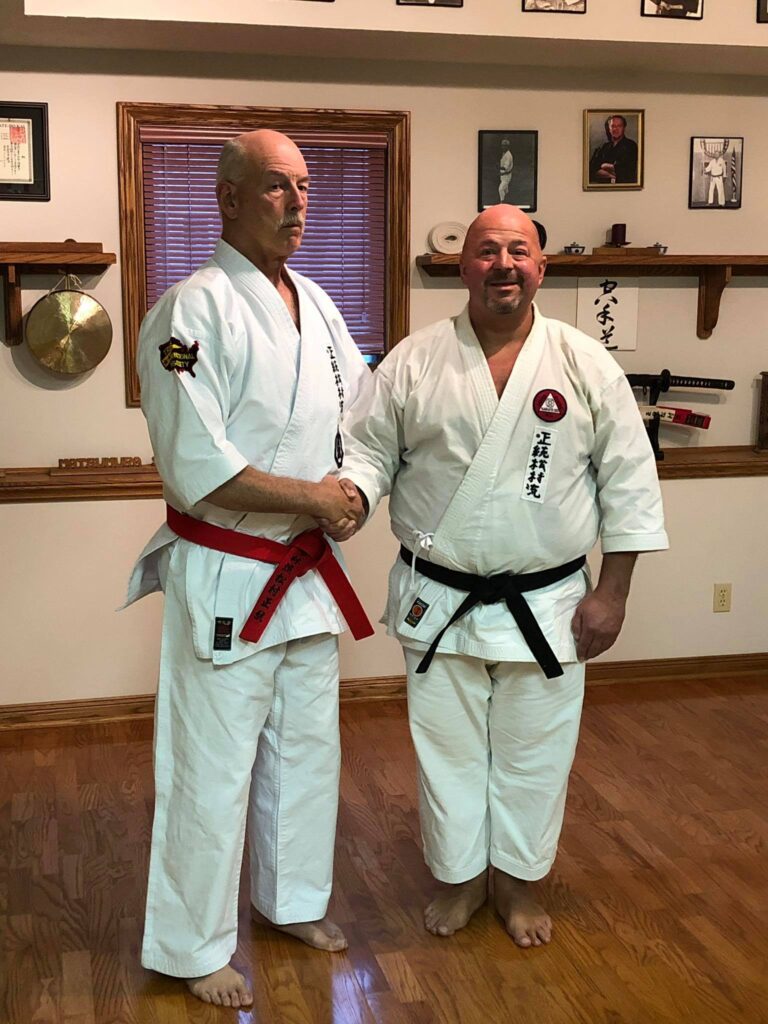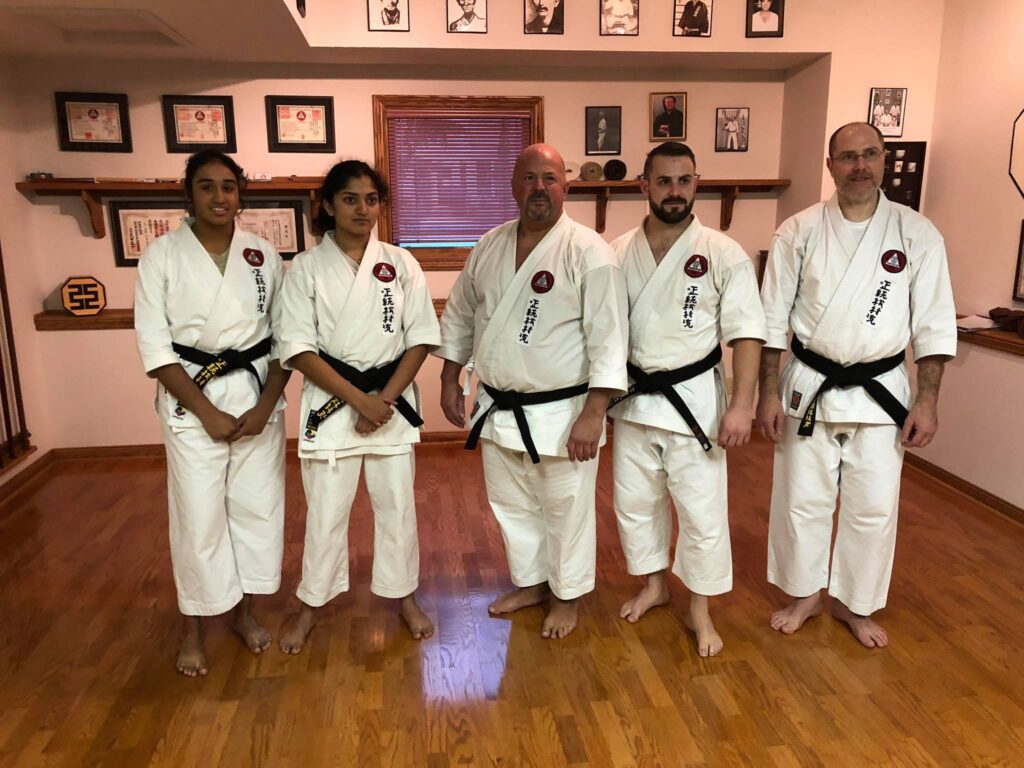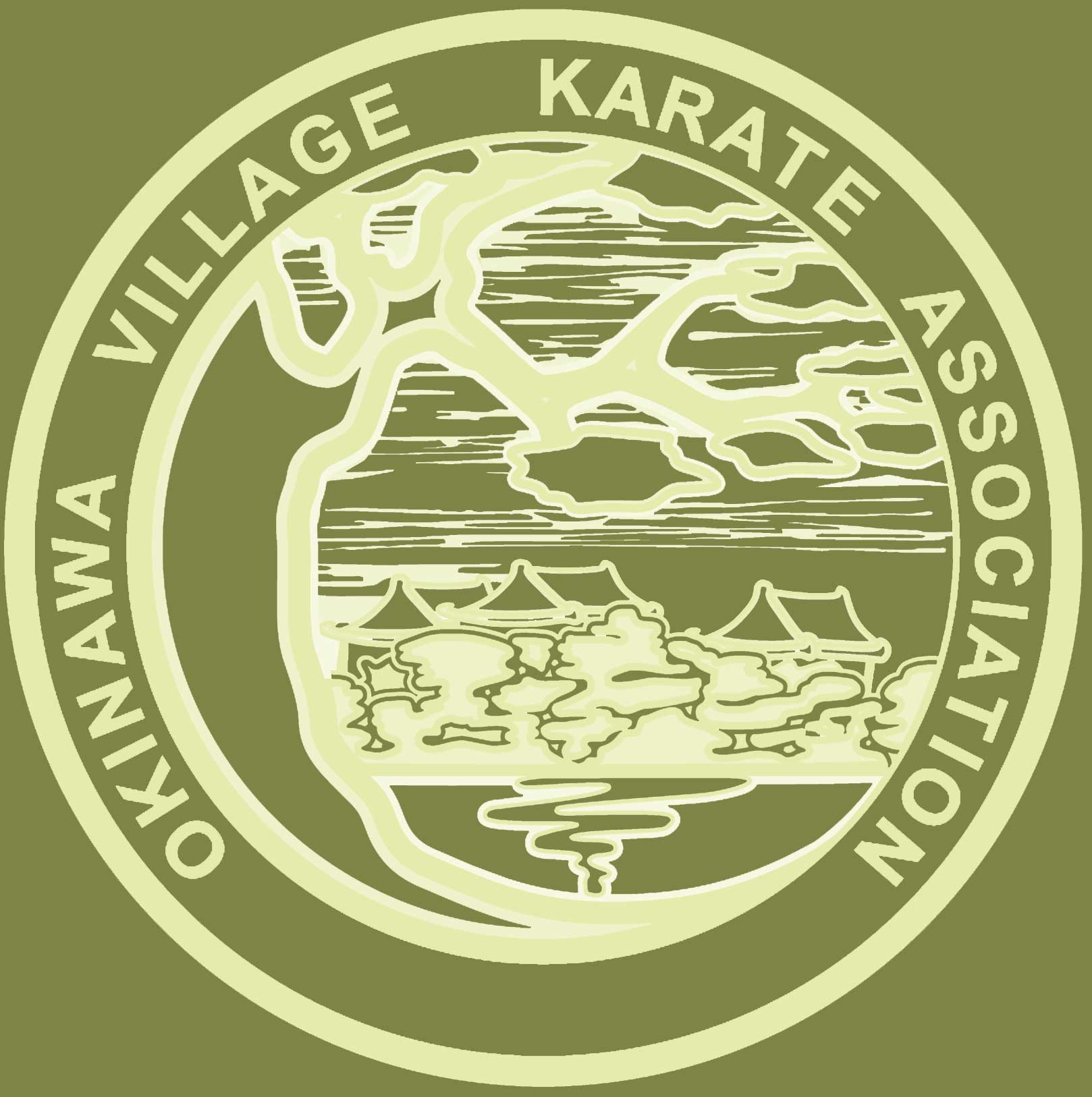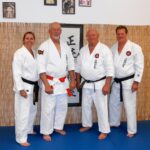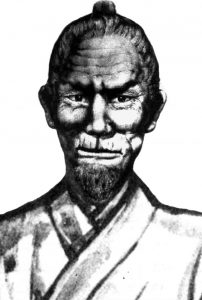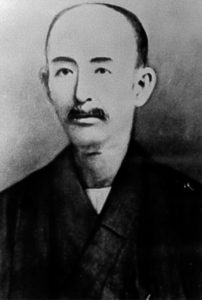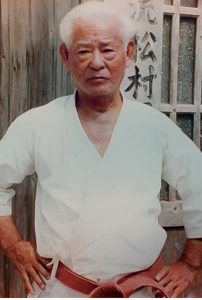The Hombu Dojo – Okinawa Village Karate Dojo – Saint Johns, Michigan
No skill becomes automatic by just observing it once and practicing it a few times. It is said, that in order to make a skill automatic, it must be practiced 10,000 times.
(Old Saying)
The Hombu Dojo is lead by sensei John Hutchcroft. John Hutchcroft, 9th Dan, “Matsumura Ha Shorin Ryu,” is sensei at Okinawa Village Karate Dojo in Michigan. John Hutchcroft began training in October, 1968, in the “Shorei Goju-ryu” system, Gladstone, Illinois. His first sensei was John L. Black. He attained rank of shodan (1st degree black belt) in July, 1972.
In February of 1974, he started training with Mr. Chuck Bridgewater at Mr. Koeppel’s direction, to start his study of “Shuri-ryu.” After one year, he was ready to continue his training at the Peoria dojo with Sensei Randy Holman. Mr. Hutchcroft trained with Mr. Holman for the next 11 years. During these formative years, he was inducted into the Trias International Society Hall of Fame in 1980 and promoted to Yondan, (4th degree black belt) Shuri-ryu, by Grandmaster Robert Trias. In 1983, Mr. Hutchcroft was promoted to Chief Instructor for the Shuri-ryu system by Grandmaster Robert Trias.
What does training at an Okinawa Village Karate Dojo involve?
All are taught “Matsumura Seito Shorinryu.” “Seito” means straight or orthodox, as in straight through the family lineage. Adults learn a progression of basic techniques and drills that increase their skills over time.
How long does it take to become proficient? That depends on the student. Listen, Learn, Practice, Repeat. No skill becomes automatic by just observing it once and practicing it a few times. It is said, that in order to make a skill automatic, it must be practiced 10,000 times.
There is an old saying, “There are no advanced techniques in karate, just the advanced application of basic ones.”
The Matsumura Ha Shorin Ryu Standards
The Okinawa Village Karate Dojo (Hutchcroft Dojo) starts with 8th kyu. This manual is the 8th kyu standard grading system for the Hutchcroft Dojo. Reasonable modifications can be made to accommodate dojos who want to have a 10 kyu syllabus .
Read the Matsumura Ha Shorin Ryu standards here!
Hombu Dojo History of Standards
Almost 100 years ago, a man named Ankoh Itosu introduced karate to the children in Okinawan middle schools. His goal was to improve the children’s physical conditioning, much like the physical education classes at our schools today. He was a student of the legendary Soken (Bushi) Matsumura and he was a very highly regarded karate teacher (sensei), as well as a school teacher and village official.
Ankoh Itosu, an Okinawan by birth, embraced Japanese nationalism and undertook the task of training and preparing Okinawa’s youth for service later in the Japanese military. He understood that it was impractical to train the children in the deadly and dangerous techniques of karate, which took years of practice to learn and perfect, so he simplified the curriculum to reflect basic kicking, punching and blocking. This all occurred around 1902.
Many of the old sensei who helped Itosu teach the children knew the effective fighting methods, and taught the techniques to some of the students after they had studied 8 to 10 years, but history reveals that this didn’t occur that often. Most of the grand masters still living today, were students of the children who learned the “school karate”. That is why many styles of Okinawan karate practiced today can be categorized as “school karate”. Some of these dojos place more importance on sport “kumite” or fighting, and less importance on “kata.” It should be noted that several of Okinawa’s present day masters have recognized the need to resurrect the old methods, and have begun their research and study anew.
It is interesting to note that one of the great old masters, Shuguro Nakazato now teaches his students to transfer their weight to the ball of their feet, raise their stances to a more natural stance, and utilizes more body change, by picking their feet “up” when walking and stepping rather than sliding as he once taught. Matsumura Seito emphasizes the same basics. OUR school teaches “Village Karate”. Ankoh Itosu’s teacher was Sokon “Bushi” Matsumura. He is renowned as being the greatest karate teacher of Okinawa. All “Shorin ryu” styles of karate emanate from him.
Matsumura taught many students throughout his long life, but most importantly, he taught the deadly forms of self defense that shaped the “old” ways of Okinawan karate. He also practiced the secret techniques of the Hakutsuru or White Crane style, developing a family kata which contained many of those secret techniques that he learned while in Fujian, China. These techniques were to remain in the family and history records that Matsumura passed the Hakutsuru on to the only family member to learn his karate, Nabe Matsumura, his grandson. Nabe Matsumura became a very skilled martial artist, and later, it is related that after the Meiji Restoration in 1868, he became a rick shaw driver, an affront to one who was of Okinawa samurai descent.
History also records that Nabe Matsumura only had one student and that was his sister’s son, Hohan Soken. Nabe started training his nephew when Soken was 12 years old, and after 10 years of basics, when Soken was 22, “old man” Nabe began teaching him the family karate of Matsumura. We really don’t know much about Nabe Matsumura. He was called “Nabe Tanmei” or “old man Nabe.” It has been related to me by Hanshi Seikichi Iha that his Sensei’s father, (Mr. Katsuya Miyahira’s father), studied karate with Nabe until Nabe died (which could dispel the myth that Nabe Matsumura only had one student).
In 1922, when Soken was approximately 34 years of age, he left Okinawa to find work in Argentina. He worked as a photographer and in a dry cleaning business. When he returned to Okinawa 30 years later in 1952, he found that karate had changed, indeed, Okinawa had changed drastically. The war torn island now had thousands of U.S. soldiers stationed there, the primary language of the island was Japanese, and very little of his native Okinawan “hogan” dialect was heard or spoken.
Karate had changed also with the advent of the “dan ranking systems,” training uniforms (gis), and the basic training methods. The emphasis on combat and self defense had now changed to an emphasis on improvement of character through physical and mental training. Much of the “village” karate he had learned was no longer being practiced or taught.
The Matsumura family tradition was never introduced into the Okinawan middle schools, and for that reason, our karate didn’t become as popular as some of the other “ryuha.” Rather, practitioners of our “ryuha” became a “subculture” of Okinawan karate, highly respected for its practical applications. It was preserved for its intended use, personal protection and self defense. Mr. Soken has related that the training was difficult and rigorous and not suited for school children. Hence, the adoption of the term “Village Karate” to differentiate our karate from some of the “school karate” styles. This is not to say that anyone type of “Shorin ryu” is superior to another. It would not be a true statement and Mr. Soken in an interview (1977) with Sensei Ernest Estrada, Grand, Rapids, Michigan, noted this. As stated earlier, some of the various ryu ha and senseis are rediscovering their roots and developing very effective methods.
Those accepted as members of our dojo become part of this tradition.
